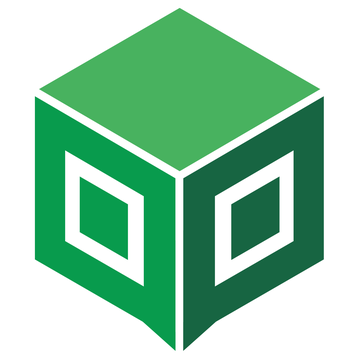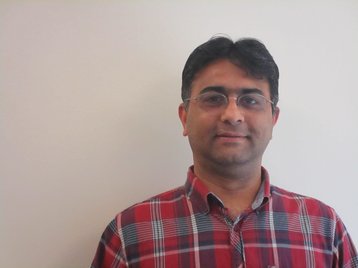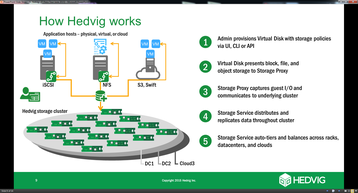When you talk software defined storage potential in Silicon Valley one company name keeps coming up– data center storage start-up Hedvig. There are two reasons for this. The first is its innovative use of public cloud resources and the second is the pedigree of its founder Avinash Lakshman.
The Hedvig platform is a hybrid cloud solution, combining public clouds like Amazon Web Services with local servers using solid state disks (SSDs) to free customers from dependence on the hardward they have bought. Lakshman brings distributed data experience from previous work at both Facebook and Amazon.
Using public cloud
The Hedvig Distributed Storage Platform uses public cloud resources (typically Amazon Web Services) and standard Intel servers or ARM servers with solid state disks (SSDs) for metadata and hard disks for data. This combination is an efficient and cost-effective solution for the tasks they deal with.
To optimize performance, each server must host metadata and conserve resources for a cache space to accelerate access without going through the network.
Marketing VP Rob Whiteley said: “Some of our clients already have direct connect instances from AWS to host our software and create virtual disks with a single policy. The latency issue with Amazon is usually not a problem since this copy is typically reserved for back-up.”
Founder and CEO Avinash Lakshman is best known for being the co-creator of the open source data base management system Apache Cassandra at Facebook and Amazon’s Dynamo storage system, the NoSQL precursor.
The company is just out of ‘stealth’ mode with the announcement of $12.5m in A round funding with True Ventures and Atlantic Bridge, then another B round of £18m, just two months later, with Vertex Ventures and others.
The investment figures are, at first examination, quite staggering but the anticipated demand for distributed storage is huge.
Lakshman says the name stands for Hyperscale Elastic Distributed Virtual Integral Granular, but admits the name has “another origin”.
Most people see a connection with the popular Swedish name Hedvig, and with Harry Potter’s owl, Hedwig - and the cube shape in Hedwig’s logo includes an extended vertical point which looks very like an owl’s beak if you look closely.
Hedvig’s distributed storage platform runs on any standard x86 or ARM powered servers as long as you have a minimum of two servers and allows users to consume block storage, object storage, file based storage, or storage for Hadoop.
It supports all hypervisors as long as they are running a storage proxy running on each host. The proxy can also run in a Docker container.
All features of Hedvig’s storage software are also available to cloud and application developers via a REST-based application programming interface (API).
“When you add servers to our software the software finds and spreads to them automatically,” said Whiteley. ”These servers may have flash or disk, and Hedvig knows their performance and leverages that for storing hot or cold data. The software will find the fastest nodes and auto-balance and auto-tier into flash if the performance demands require it ” Whiteley said
How Hedvig works
Hedvig’s storage platform works on the principles of virtual disks which are provisioned for use by applications. Each virtual disk can be configured for replication and compression - they can also be used as flash disks if flash performance is required. Whiteley said: “You are almost creating flash in software - although the quality of the underlying hardware determines the performance.”
The Hedvig platforms use inline deduplication algorithms, compression and snapshots of the data which take place regularly. If a node goes down, the other servers work together to rebuild it using the 3 copies of the data stored across other servers. A 4TB hard disk lost on a node can be reconstructed in 20 minutes claims Hedvig.
Hedvig has two options: perpetual license per TB and a subscription on a six months minimum term.
Hedvig is confident that its flavor of software defined storage can give companies a 20 to 25 percent cost saving over traditional storage hardware solutions.



